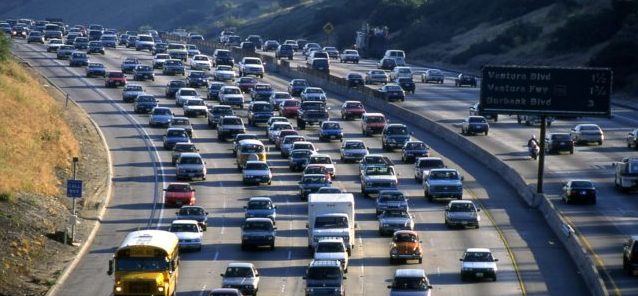The Government of Canada has signed an agreement with the State of California to work together to cut vehicle pollution.
Environment Minister Catherine McKenna announced that the two governments will work together on regulations to cut greenhouse gases from vehicles and promote the use of cleaner-running vehicles.
McKenna announced the agreement with California Gov. Gavin Newsom, and signed the memo of understanding with the chair of the California Air Resources Board, Mary Nichols.
California has long had among the most stringent vehicle emissions limits and emissions reducing policies in the U.S.
The Canada-California agreement comes as the state is suing the U.S. federal government over its right to continue to set its own environmental regulations.
Under current regulations in Canada, by 2025 new model light-duty vehicles are expected to burn as much as 50 per cent less fuel and emit half the volume of greenhouse gasses compared with vehicles built in 2008.
The agreement also commits Canada and California to work together to promote the uptake and opportunity of cleaner vehicles.
In California, automakers are required to ensure that zero-emission vehicles make up a growing proportion of their sales, and the state aims to have five million zero-emission vehicles on the road by 2030.
Canada and California will also share best practices and technical information about regulating cleaner fuels, building on California’s pioneering Low-Carbon Fuel Standard.
California’s standard does not favour a particular fuel technology, but the regulation is expected to promote the increased the use of natural gas, electric, hydrogen, and biofuels.
Some 96% of California’s vehicle population still relies on petroleum-based fuels.
Newly released 2018 data from the California Air Resources Board (CARB) indicates that the Low Carbon Fuel Standard (LCFS) continues to drive production of a growing volume of cleaner transportation fuels for California consumers: to date some 12 billion litres of petroleum diesel have been displaced by low-carbon alternatives since 2011.
“Renewable and bio-diesel, renewable natural gas, ethanol, and electricity are all seeing growth under the LCFS,” said CARB Executive officer Richard W. Corey.
Canada is developing a Clean Fuel Standard that will cut emissions by 30 million tonnes in 2030—equivalent to taking 7 million cars off the road, a reduction of approximately one-third of current emissions.
The Government of Canada is working toward having all light-duty vehicles sold being 100% zero-emission vehicles by 2040. This year’s federal budget offers Canadians a rebate of up to $5,000 for qualifying zero-emission vehicles and other tax incentives for businesses that want to upgrade to zero-emission fleets.
What is the Low Carbon Fuel Standard?
The Low Carbon Fuel Standard is designed to encourage the use of cleaner low-carbon fuels in California, encourage the production of those fuels, and therefore, reduce greenhouse gas emissions.
The LCFS standards are expressed in terms of the “carbon intensity” (CI) of gasoline and diesel fuel and their respective substitutes. The program is based on the principle that each fuel has “life cycle” greenhouse gas emissions that include CO2, CH4, N2O, and other greenhouse gas contributors.
This life cycle assessment examines the greenhouse gas emissions associated with the production, transportation, and use of a given fuel. The life cycle assessment includes direct emissions associated with producing, transporting, and using the fuels, as well as significant indirect effects on greenhouse gas emissions, such as changes in land use for some biofuels.
The carbon intensity scores assessed for each fuel are compared to a declining CI benchmark for each year. Low carbon fuels below the benchmark generate credits, while fuels above the CI benchmark generate deficits. Credits and deficits are denominated in metric tons of GHG emissions.
Providers of transportation fuels must demonstrate that the mix of fuels they supply for use in California meets the LCFS carbon intensity standards, or benchmarks, for each annual compliance period. A deficit generator meets its compliance obligation by ensuring that the amount of credits it earns or otherwise acquires from another party is equal to, or greater than, the deficits it has incurred.


0 Comments